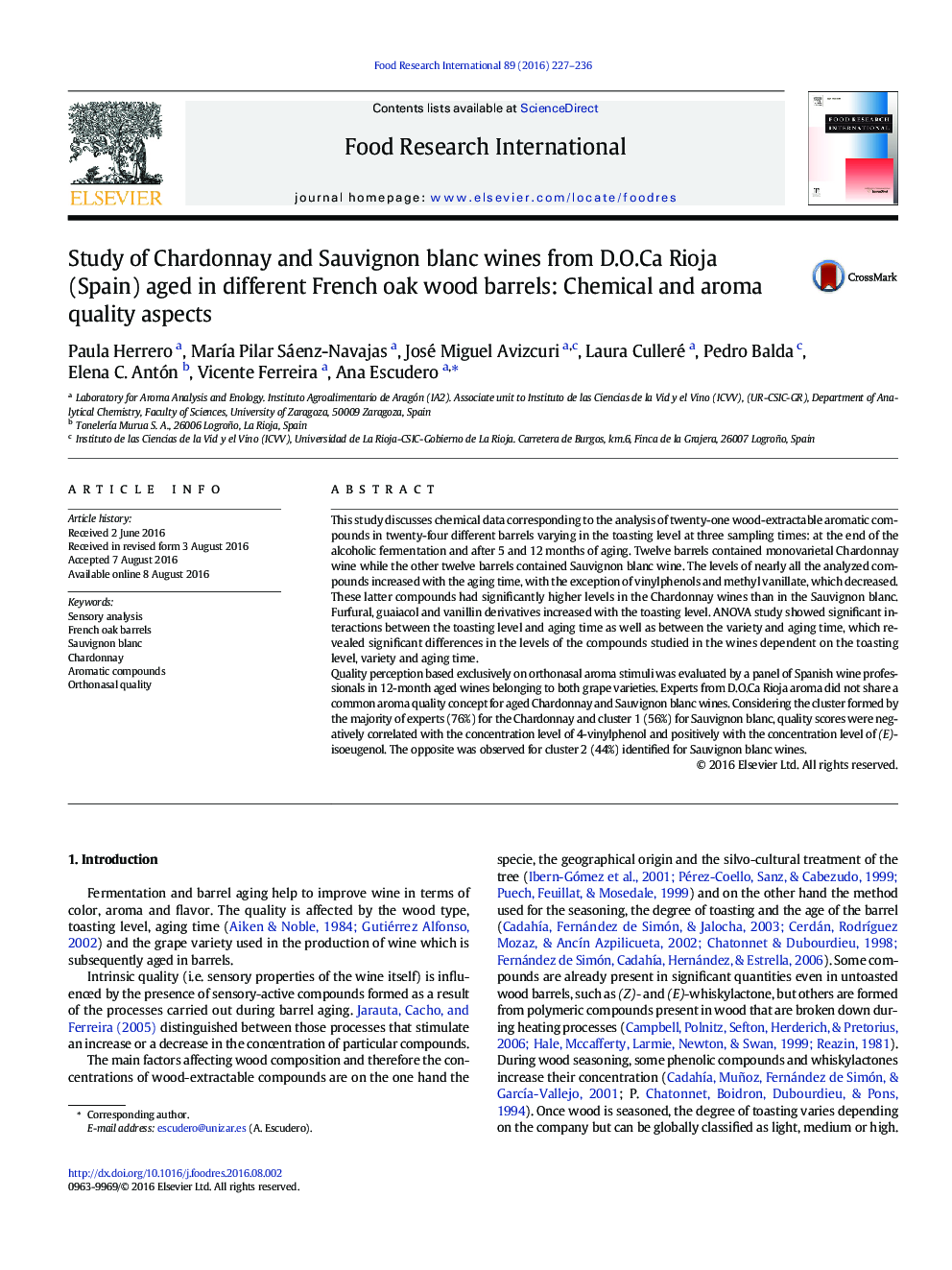| Article ID | Journal | Published Year | Pages | File Type |
|---|---|---|---|---|
| 6394748 | Food Research International | 2016 | 10 Pages |
â¢21 aroma compounds has been analyzed in 72 wines of Chardonnay and Sauvignon blanc.â¢ANOVA showed interactions toasting type Ã aging time as well as variety Ã aging time.â¢Ortonasal quality was evaluated by Rioja wine professionals in 12-month aged wines.â¢Experts did not share a common aroma quality concept for both varietal aged wine sets.â¢Correlations between perceived quality and chemical composition has been studied.
This study discusses chemical data corresponding to the analysis of twenty-one wood-extractable aromatic compounds in twenty-four different barrels varying in the toasting level at three sampling times: at the end of the alcoholic fermentation and after 5 and 12Â months of aging. Twelve barrels contained monovarietal Chardonnay wine while the other twelve barrels contained Sauvignon blanc wine. The levels of nearly all the analyzed compounds increased with the aging time, with the exception of vinylphenols and methyl vanillate, which decreased. These latter compounds had significantly higher levels in the Chardonnay wines than in the Sauvignon blanc. Furfural, guaiacol and vanillin derivatives increased with the toasting level. ANOVA study showed significant interactions between the toasting level and aging time as well as between the variety and aging time, which revealed significant differences in the levels of the compounds studied in the wines dependent on the toasting level, variety and aging time.Quality perception based exclusively on orthonasal aroma stimuli was evaluated by a panel of Spanish wine professionals in 12-month aged wines belonging to both grape varieties. Experts from D.O.Ca Rioja aroma did not share a common aroma quality concept for aged Chardonnay and Sauvignon blanc wines. Considering the cluster formed by the majority of experts (76%) for the Chardonnay and cluster 1 (56%) for Sauvignon blanc, quality scores were negatively correlated with the concentration level of 4-vinylphenol and positively with the concentration level of (E)-isoeugenol. The opposite was observed for cluster 2 (44%) identified for Sauvignon blanc wines.
Graphical abstractDownload high-res image (81KB)Download full-size image
